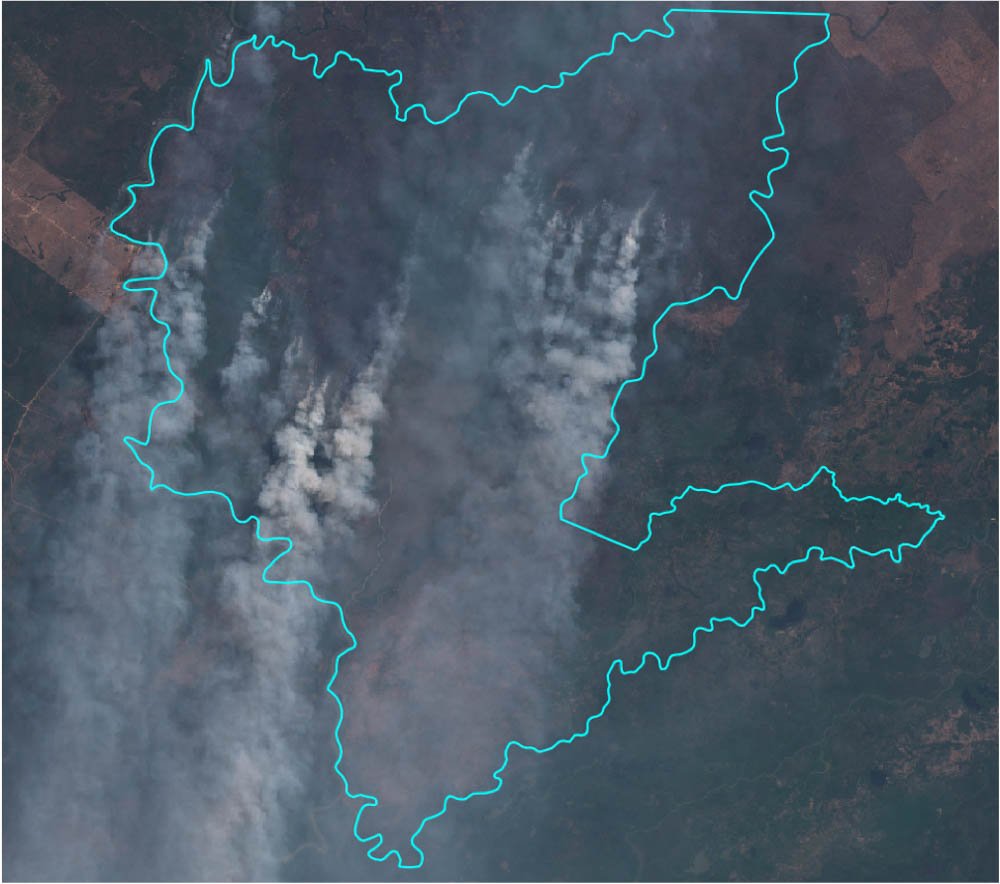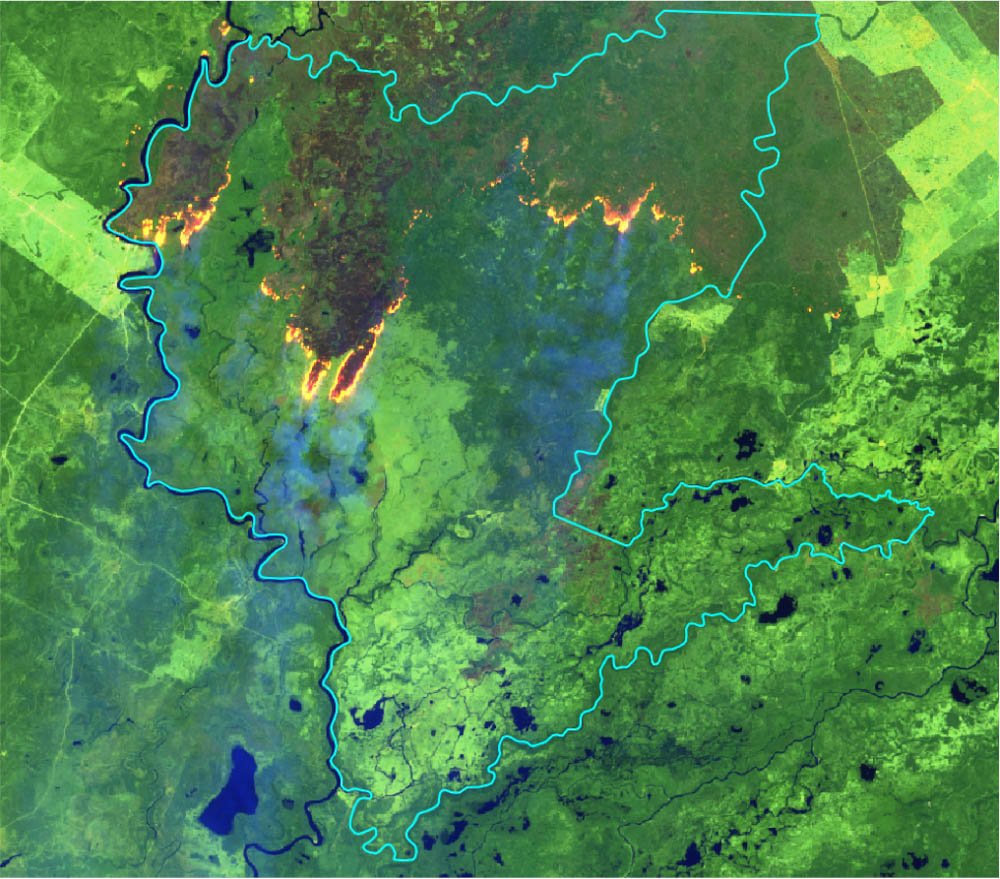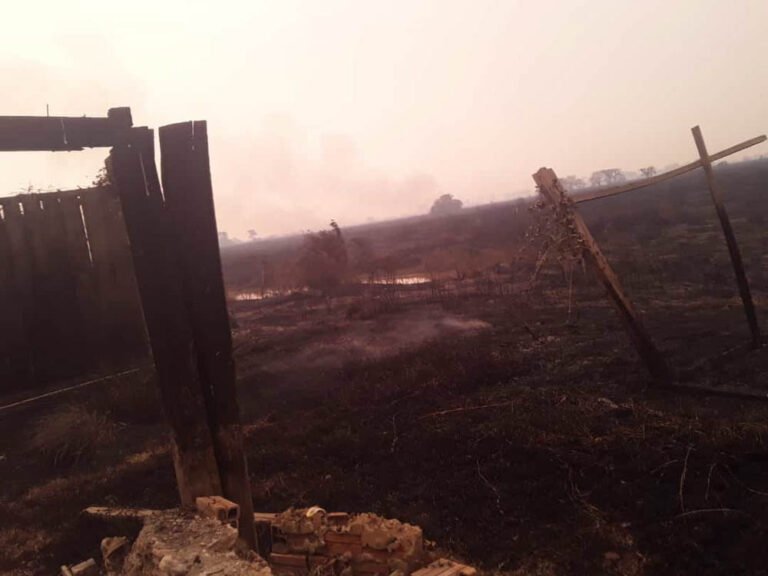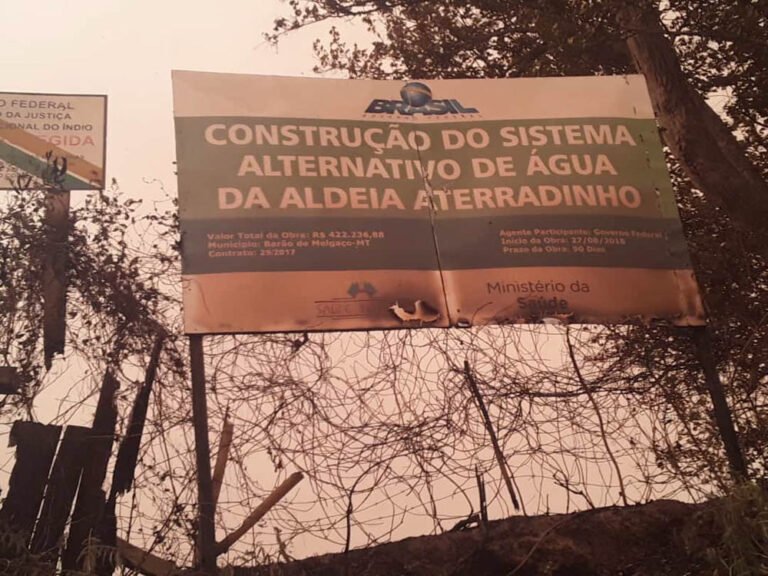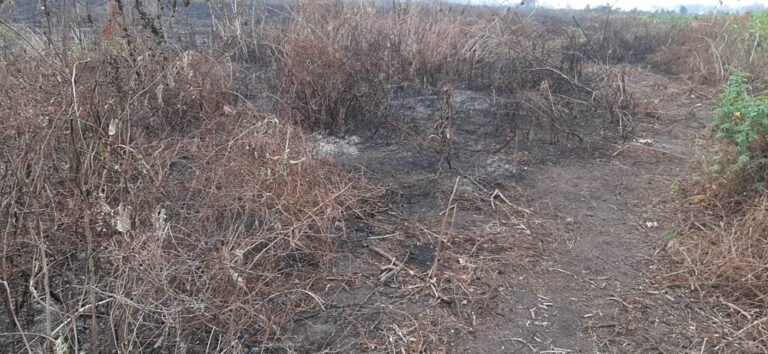Located in the Pantanal wetlands region of Mato Grosso, at the confluence of the Cuiabá and São Lourenço river basins, the Baía dos Guató Indigenous Land covers 19,000 hectares, most of it in the municipality of Barão do Melgaço, and a smaller part in the neighboring municipality of Poconé. It is home to 202 Guató indigenous people, according to data from 2014 in the Brazilian Indigenous Health Care Information System of the Special Secretariat for Indigenous Health (Siasi/Sesai).[1]
The first written records of the Guató date back to travelers’ accounts in the 16th century. The Guató are one of the most ancient peoples of the Pantanal, and once occupied practically the entire southwestern region of what is now the state of Mato Grosso, including lands that today belong to Mato Grosso do Sul and Bolivia.[2]
The Guató indigenous people customarily live on man-made landfills (terrains artificially raised to prevent inundation during the rainy season), the oldest of which were erected 8,000 years ago. The Bandeirante invasion in the 18th century and the spread of smallpox from contact with soldiers during the Paraguay War in the 19th century hit this people hard, but it was later in the 19th century and, more intensely in the 20th century, with the introduction of livestock into the Pantanal wetland region, that the loss of territory was accelerated by the invasion of cattle ranchers. In addition to taking over their land, the ranchers also located their ranch buildings and livestock corrals on the indigenous landfills. Some indigenous people migrated to the cities and others began to work on the new ranches, in conditions described as slavery by Domingos, the oldest of the Guató people. As a result of this process, the Guató were considered extinct as a people at the end of the 1950s, until, in 1976, missionaries identified Guatós living on the outskirts of Corumbá and, later, in other cities in the two states. They then began a process of reorganization to fight for their ethnic recognition and territorial rights. Today they are seen as the last of the canoeist indigenous peoples who lived in the lowlands of the Pantanal.[3]
Fighting for their re-existence, the Guató are now once again under attack with the expansion of the agricultural frontier into their ancestral territory in the Pantanal. Mr. Domingos is dismayed by the tragedy, never seen on such a scale.
Notes
Instituto Socioambiental (ISA). Terra Indígena Baía dos Guató. In: Terras Indígenas no Brasil.
The Baía dos Guató Indigenous Land was ravaged by flames during the unprecedented wildfires in the Pantanal in 2020.[4] Despite being in the Pantanal, the planet’s largest continental flooded area, they suffer from a shortage of drinking water, and no electrical power, health care or school education. The biggest problem, however, is that their land tenure has not been legalized, since the territory was demarcated and approved by Decree 9,356 dated April 27, 2018 that was suspended by a court injunction in December of the same year[5], causing legal uncertainty and intensifying conflicts with invaders who want to take over parts of this Indigenous Land.
Notes
ICV. Avanço do fogo no Pantanal ameaça indígenas em Mato Grosso, Sept. 14, 2020.
Radio Agência Nacional. Decreto homologa demarcação da terra indígena Baía dos Guató em MT, April 27, 2018. Part of the area is being contested in court by a local ranch, which keeps cattle in the disputed area.
André Borges. Única demarcação de terra indígena feita por Temer é suspensa pela Justiça. O Estado de S.Paulo, Dec. 20, 2018.
Gil Alessi. Guató, último povo a ter terra demarcada pode ser primeiro a perdê-la sob Bolsonaro. El País, Jan. 14, 2019.
The dry season lasted longer than average in 2020. The headwaters of rivers that form the Pantanal have been cleared and can no longer hold water, while the corixos (seasonal natural canals) have dried up in many places. What little water was left turned stagnant and muddy, and became the last alternative for humans and animals, especially the alligators that dehydrated around the parched corixos and died. In the Pantanal of Mato Grosso, the Tereza Cristina and Perigara Indigenous Lands, of the Bóe (Bororo) people, and the Baía dos Guató had more than 80% of their areas ravaged by fires. Of the 19,000 hectares of the Baía dos Guató Indigenous Land, 16,704 were burned in 2020, practically 88% of the territory.
Notes
In October 2020, the Guató shaman Ms. Sandra dos Santos, lamenting the devastation, said that she could not even find the green leaves to make tea to help her relatives: “People drink water from the river full of pesticides and get diarrhea, nausea, stomach aches. […] Look at the state of our nature, our health. The trees have nowhere to run!” And she concluded: “The fire has ravaged inside me too!” Sandra also said that she cannot work up the courage to leave her home, because she knows that she will find the hundred-year-old trees destroyed.
Fires in Indigenous Land Baia dos Guato. Credit: Guato People.
On Sandra’s landfill, all the vegetation around her earthen floor house and its thatched roof were destroyed by fire. Her 3-year-old grandson helped her throw water to keep the house from burning. The banana, cassava, sugar cane, pineapple and other crops that indigenous farmers grow when the waters recede on the landfills made by their ancestors thousands of years ago were consumed by the worst fire in the Pantanal’s history. Animals starved in the midst of the destruction and a jaguar attacked an indigenous neighbor, Nardo Guató. Alessandra Guató, Sandra’s daughter and a master’s student in anthropology at the Federal University of Mato Grosso (UFMT), understood: “At this time, she with cubs… and with the wildfires, they are very hungry!”
The Guató protected their territory from criminal fires with their own bodies. They know that the future of the trees, the animals and the waters in the Baía dos Guató Indigenous Land is inextricably related to their own continuity as a people. Considering the interests of land grabbers who use arson as a weapon to threaten them, the regularization of the Guató territory is more urgent than ever.
Aloir Pacini is a professor in the Graduate Program in Social Anthropology (PPGAS) at the Federal University of Mato Grosso (UFMT)




